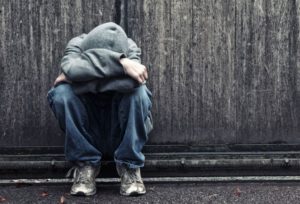Homelessness among migrants on the rise
 Migrants for the first time are large proportion of people deemed to be homeless in Australia, according to newly released census data.
Migrants for the first time are large proportion of people deemed to be homeless in Australia, according to newly released census data.
The data shows the number of homeless people in Australia has soared by almost 15 per cent and 45 per cent of these are migrants –despite being just a third of the population.
The Census data says about 15 per cent of people who had arrived in Australia between 2011 and 2015 are homeless, with about two-thirds of those living in “severely” crowded conditions.
The Census includes people living in “severely crowded conditions” as homeless and this category is responsible for the overall rise in homelessness, the Census data shows.
More than 116,400 Australians are homeless – compared to 102,400 in 2011, the Australian Bureau of Statistics Census reveals.
The increase outstrips Australia’s general population growth of about 9 per cent over the same period.
The number of people who were homeless on Census night in the City of Sydney (ABS data is divided up by local government area) increased by almost 70 per cent. The Melbourne local government area recorded a massive 85 per cent increase.
New South Wales recorded a marked jump, with the number of people who are homeless up 37 per cent between 2011 and 2016.
In Victoria, there was an 11 per cent increase in people who were counted as homeless in the last Census. Queensland also recorded a rise of about 13 per cent.
There was a decline in the homelessness rate in the Northern Territory, probably as part of a significant building program, said ABS spokesman Dr Paul Jelfs. Other states remained relatively stable.
The Federation of Ethnic Communities’ Councils of Australia (FECCA) said the emerging trend of homelessness among migrants was concerning.
“These figures show how vulnerable newly arrived migrants are when they first come to Australia,” said FECCA chairperson Mary Patetsos.
“The early years are when they most need help — and proposals to extend the waiting periods for welfare support will put these people at even greater risk.”
Nationally, one in five of people who were homeless were Aboriginal or Torres Strait Islander.
Homelessness Australia chair Jenny Smith said these figures showed the unaffordable housing crisis was getting worse.
“These figures will come as no surprise to our homelessness services … who have to turn away 250 people each day,” Ms Smith said.
“We need to recognise housing has become an activity for investors, not shelter for people.”
While the number of people sleeping rough on the streets increased by about 20 per cent, they represent only 7 per cent of the total homeless population. There are a far greater number of “hidden homeless”; living in support accommodation, boarding houses or couch surfing.
ABS spokesman Dr Jelfs said there had been a notable increase in older people becoming homeless, particularly women.
“This is probably related to domestic violence, relationships breaking down and economic status where they just don’t have enough money to support themselves, including superannuation,” he said.
Overall, there has been a 30 per cent increase in people aged 55 and over experiencing homelessness.
There has been a 10 per cent increase in homelessness among women since 2011.
Laurie Nowell
AMES Australia Senior Journalist












